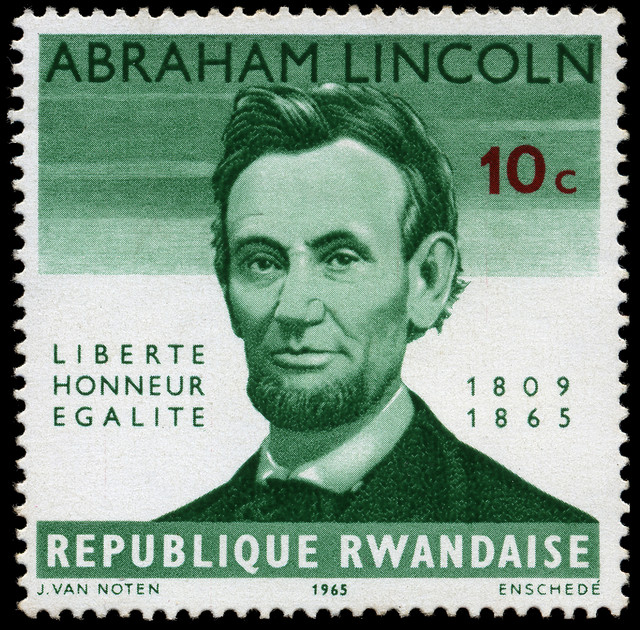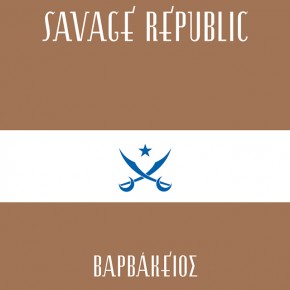We live in the age of lists. The range of culture available to us is staggering, the cost of consuming it less than ever before. Confronted with such overwhelming abundance, we long for the means to impose order upon it. And that’s why we scour the Best-Ofs compiled by anyone with a trace of expertise for guidance. Because, even if we are blessed with unprecedented access to books, music, film and television, we don’t have the time to sort through these riches on our own.
In a sense, this condition is simply the latest iteration of a predicament that has always shadowed modernity: the more our horizons expand, the more difficult it is to find the resources to explore them. For centuries, the principal impediment to cultural discovery was financial. Unless you were wealthy or the beneficiary of someone who was, there were limits to the acquisition of knowledge.
As the role of the critic became institutionalized in the world of print, this patronage was extended to those lucky individuals who wrote for reputable newspapers and magazines. In the preface to his very first consumer guide in 1969, longtime Village Voice popular music critic Robert Christgau spelled out the consequences. “Unless you are very rich and very freaky, your relationship to rock is nothing like mine.” The reason? His position made it possible for him to know far more than the average consumer possibly could.
“I’m not you.” He explains. “By profession, I am surfeited with records and live music. Virtually every rock LP produced in this country is mailed to me automatically, and I’m asked to go to more concerts than I can bear. I own about 90 percent of the worthwhile rock albums released since the start of the Beatles era, and I occasionally play every one of them.”
Well into the 1990s, this imbalance was still an integral part of the music business. Unless you were “very rich and very freaky,” were an established critic like Chistgau, or had the privilege of working at radio station, it was extraordinarily difficult to become a true expert.
With the rise of Napster, though, this barrier started to crumble. Fifteen years on, after waves of illegal file sharing, services like Spotify have made this revolution in learning safe for everyone. For a few dollars a month, anyone who really wants to be an expert on some aspect of music can be one.
The model for this world of access is not new, of course. Lending libraries have long made it possible for people of modest means to build their knowledge of books. The difference today is that, while the public sphere has been shrinking steadily in most nations, putting intense pressure on all government-sponsored services, a combination of technological advances and market forces have extended the principle of “borrowing” to all forms of popular culture. Whether Spotify, YouTube, Netflix or Project Gutenberg, the means of acquiring direct experience of cultural goods has never come cheaper.
Just as the line between public and private has become more fluid, so have the ones dividing professional from amateur and expert from novice. The distinction still matters, but it is no longer grounded so firmly in conditions of inequality. There are still plenty of people who make their living exclusively in the arts. Even those cultural domains most vulnerable to the rise of volunteer labor, such as popular music criticism, still boast full-time employment. But the aura of legitimacy that used to distinguish the output of those positions from the rest of public opinion has faded to the point of becoming imperceptible.
Can anything worthwhile take its place? When we confront an intimidating excess, not only of cultural offerings, but of the end-of-year lists that purport to make sense of them, paralysis is a natural response. And, while the creation of “meta” lists can help, the specter of infinite regress is impossible to ignore. We need guidance, not only on how to spend our free time, but on the proliferation of aids intended to save it: guidance on our guidance.
Personally, as much as I enjoy poring over the lists that circulate at this time of year, I find that their sheer quantity leads to diminishing returns. I’m especially frustrated by the sort that pare everything down to a minimum, the lists that merely showcase the skeletons of pleasure, without the unruly flesh that made it possible. In the end, I realize, I care less about what someone holds in high regard than the reason why they do so.
I also weary of those who act as though it were still possible to occupy the rarified place that Robert Christgau did in 1969. No, expertise is not parceled out evenly in our society. But the time when a secular priesthood could claim special access to cultural knowledge is over. Anybody who cares enough can acquire expertise on a subject, regardless of pedigree.
That’s why, in the spirit of my conviction that autobiographical criticism is the best approach for those who wish to pass judgment without passing themselves off as superior, I offer you this unabashedly idiosyncratic and clearly not authoritative list of the cultural moments that made the biggest impression on me in 2012.
Best Coast – The Only Place
Having taught a number of courses centered on California culture, I was immediately drawn to this album’s cover, which features a winsome bear hugging a map of the state. The title song’s impossibly catchy salute to Southland existence further cemented the attraction. But I regarded the record as the equivalent of a summer fling.
The more I listened to it, though, as it kept popping up on shuffle mode, the more I found myself picking up the dark undercurrent of the lyrics. For all the music’s poppy sheen, The Only Place is no orange crate propaganda. Just as in the best film noirs, despair saturates the shadows of its “bright, guilty world.”
This Is Not a Film – directed by Jafar Panahi
This remarkable document, purportedly smuggled out of Iran in a cake, is one of the most powerful arguments for creative expression that I’ve ever seen. Confined to his apartment, unable to practice his craft for a living, Panahi finds a way to communicate his ideas despite lacking nearly all the tools of his trade. And he provides compelling insight into his previous work, like the wonderful Crimson Gold, as well.
Translating German
My Souciant collaborator and long-time muse Joel Schalit had the brilliant idea to get me over severe writer’s block by having me translate political flyers he had photographed in German-speaking Europe.
Because I had done very little translating before, I was apprehensive. But I ended up doing a decent job. And the process gradually made me comfortable sharing work that fell far short of perfect, but was still good enough. Given the unrealistically high standard to which I have too often held my own prose, this was a very useful lesson indeed.
Additionally, immersing myself in German every week unlocked my memories of being an exchange student in the 1980s, one of the happiest times in my life, and one I would do well to be inspired by as I continue to struggle through some daunting personal problems.
Bloc Party – Four
As exciting as a band’s debut may be, I am more interested in what they become after the initial hype has worn off, when their fan base has shrunken to the diehards. That’s why I was eager to hear this album, especially since it arrived four years after its predecessor. Critics complained that it doesn’t break new ground. Or, more harshly, that it can’t really cover the ground the band’s earlier work had tilled.
What I hear, though, is a band that isn’t afraid to sound like itself, smartly foregrounding its best features, especially lead singer Kele Okereke’s wondrously pliant voice. Backlash is inevitable when a band makes the kind of splash Bloc Party did with Silent Alarm. But, at a time when many artists can barely make it to a second album, we should be glad that Bloc Party have found a way to keep their unique sound going.

Lincoln, directed by Steven Spielberg
I’ve never been a big fan of Spielberg’s work. Much of it seems to typify the bland mediocrity of mainstream American popular culture. Nor am I especially partial to the acting of Daniel Day Lewis, who usually seems to be trying too hard to impress. But I have to confess that, of the many films I saw in 2012, Lincoln is one of the very best.
The subject matter plays both to Spielberg’s strengths — he has always been good at moving a story along— and those of his actors. What really set Lincoln apart for me, though, was the screenplay by Angels in America playwright Tony Kushner. The dialogue is remarkably fresh, particularly when you consider how difficult it is to prevent the story of the United States’ most quotable President from descending into a stream of platitudes.
For me, though, the best thing about the film is that it shows how a difficult political victory can be won. Given the perpetual gridlock in Washington D.C., Lincoln’s emphasis on pragmatism is most welcome. I also loved the attention paid to Lincoln’s use of the telegraph, which he used to great advantage. The power of nearly instantaneous communications was never more lucidly depicted.
The Lemonheads, live at Plush in Tucson, February 7th
While Evan Dando has his detractors, I regard him as perhaps the most underrated songwriter of his generation. However buoyant his music, however simple his lyrics, they communicate a melancholy rooted in the complexity of human relations.
Somehow, I had managed to miss Lemonheads shows for over two decades, whether because I was out of town, had work to do or, more recently, was solo parenting. To finally see the band, then, was a big deal. I was delighted to hear most of my favorite Lemonheads songs at this show, some with the band and some during Evan’s acoustic interlude.
But the highlight of the evening occurred after the show, in the venue’s parking lot, when I was able to strike up a conversation with Dando, who has a reputation for prickliness, and tell him about the only other time I had heard the band perform, standing outside the Berkeley Square on University Avenue in August, 1989, waiting for my automobile accident-delayed friend to show up with the tickets. I ended up having to hear the band’s whole set through the club’s thick walls, but did finally make it inside in time to see the headliner, Mudhoney.
Surprisingly, he remembered that show in as much detail as I did, perhaps because Mudhoney was temporarily reduced to a three-piece ensemble in the wake of bassist Matt Lukin’s legal difficulties. Dando’s reserve melted away for a few minutes as he was transported back to a time before the mainstreaming of alternative rock turned him into an object of scrutiny and speculation.
Strangely, some of my biggest highlights for the year centered on culture I have little interest in myself. Although my parenting responsibilities have diminished over the years, as my daughter demands greater autonomy, I find myself every bit as preoccupied with her cultural explorations as I ever was. Even as the scope of her privacy expands — she turned fourteen in October — and she shies away from various topics of conversation, she wants to discuss her favorite reading, viewing and listening with newfound intensity.
When she was first reading the Harry Potter books in elementary school, I read ahead in them so that I would be prepared for upsetting plot developments, but also so we would have something to talk about. When she turned to J.R.R. Tolkien’s work, I reread those books as well, so that they would be fresh in my mind. But most of the paths her reading took her in 2012 were not ones I had the time or inclination to follow.
Although she still enjoys books on a regular basis, the majority of her reading is now devoted to fan fiction based on her favorite fictional universes: the world of Harry Potter, Middle Earth from The Hobbit and The Lord of the Rings, the Pretty Little Liars series and, most recently, the television program Glee. Although I have tried to acquire some knowledge of the latter “foundational” texts, though not as diligently as I kept up with J.K. Rowling and J.R.R. Tolkien, I have neither the patience nor the passion to wade through the vast quantity of DIY storytelling based on any of them.
As my daughter herself admits, the vast majority of this material is badly written. I am not surprised that her own fledgling attempts at fan fiction, though written by a middle-schooler, get considerably better notices than most. But quality control, though promoted by reader reviews, is not the point. What makes the fan fiction community so exciting to someone like me is that it demonstrates a vast collective enterprise, almost entirely self-regulating, that is —in part for legal reasons, since most stories are built on copyrighted material — remarkably resistant to monetization.
My daughter, whose entire conscious life has been played out within easy reach of the internet, finds this less impressive than I do. For her, the thrill of fan fiction derives from the way it opens up closed worlds, turning the finished products of famous authors into a kind of narrative toolbox where one can root around for the parts one needs. The most dramatic consequence of this mindset, which her teenage sensibility no doubt accentuates, has been the discovery that romantic partnerships are not constrained by the immutable laws of a particular universe’s official canon.
I realize that the mix-and-match mindset that follows from this discovery is hardly new. Even if we leave aside the overall flexibility of myth and legend, as well as the unauthorized elaborations on classic books like Don Quixote that made the rounds in their day, the fact remains that Star Trek fan fiction featuring romances between Kirk and Spock or other same-sex relationships has been around for decades. Indeed, such “slash” pairings were a staple of DIY storytelling long before the worldwide Web as we know it took shape.
But the giddy prospect of transgressive coupling that held her — and, by extension, her father — in thrall throughout 2012 is not clouded by the acknowledgement of this historical background. A year before starting high school, she already has a firm grasp on just how arbitrary relationships really are. And, because of her daily speculations on which new pairings might lead to intriguing narrative frisson or confirm a character’s super-mega-foxy-awesome-hotness — Snape and Dumbledore, Gandalf and Galadriel, Blaine and Santana — she is far less encumbered by a sense of the way things are supposed to be than I was at her age. For that, I am deeply grateful.
Photographs courtesy of pixelschubser.de and Confetti. Published under a Creative Commons license.





